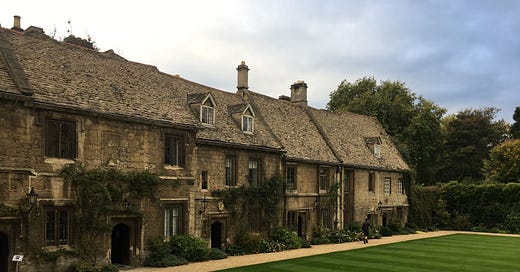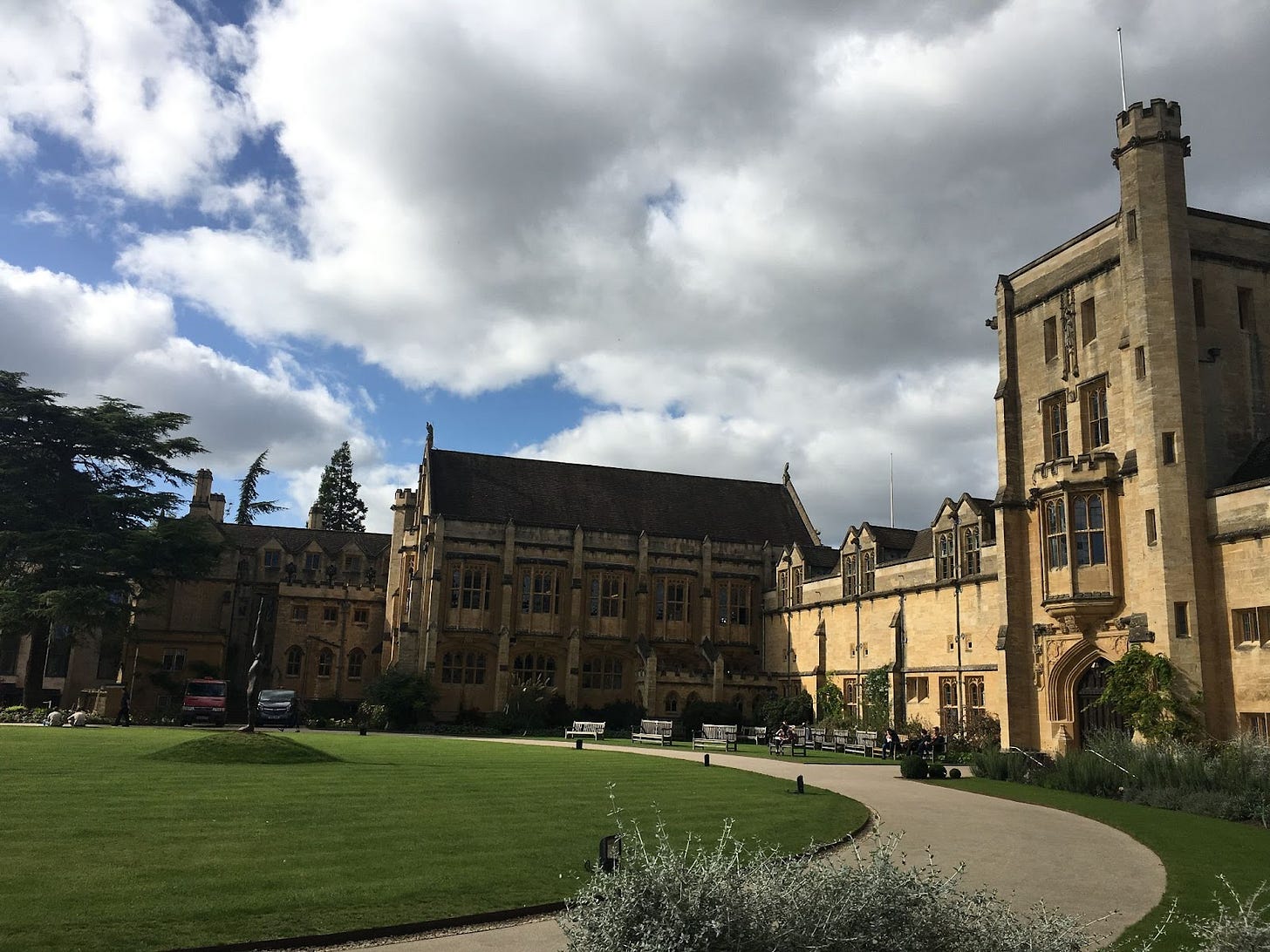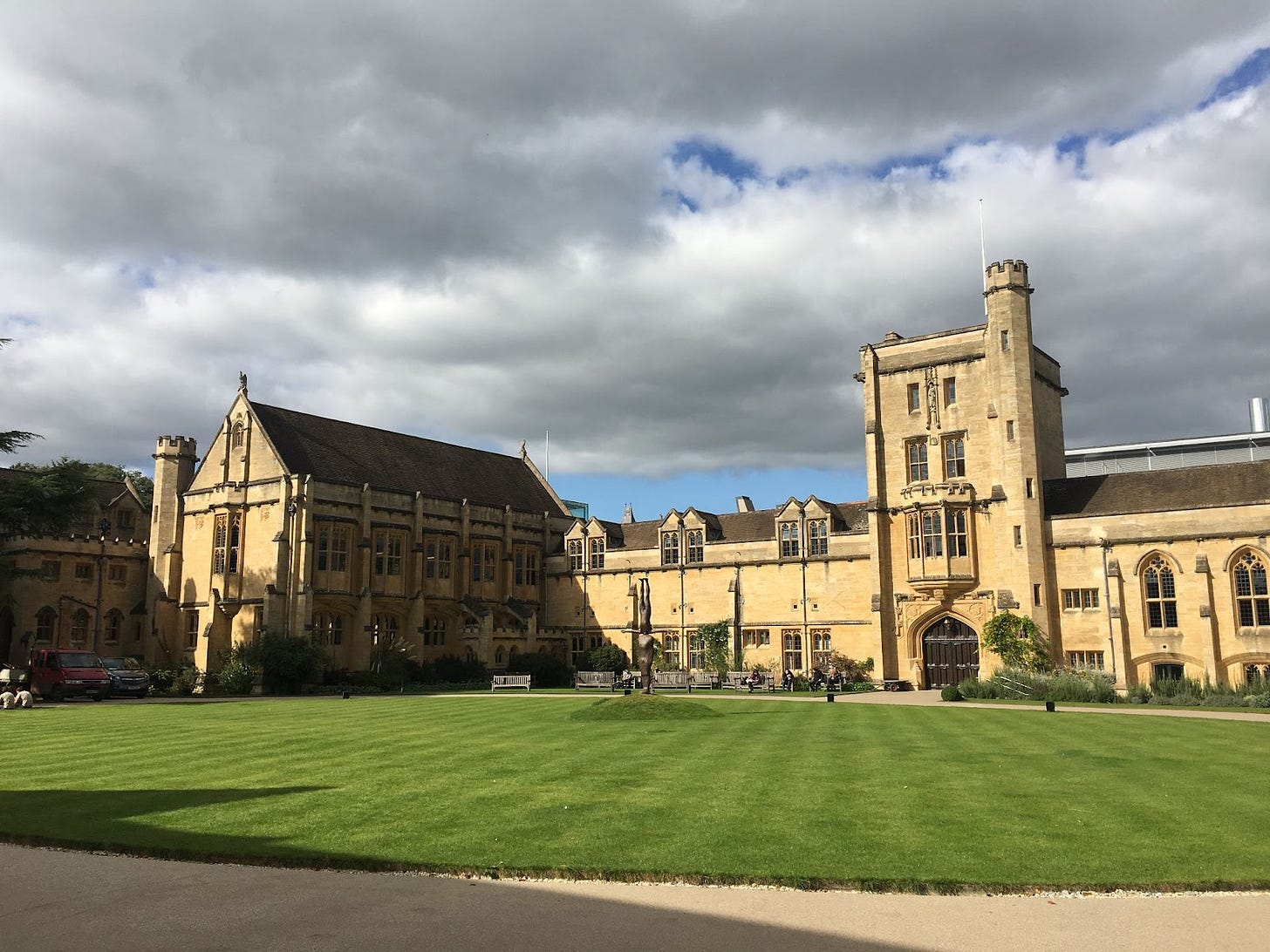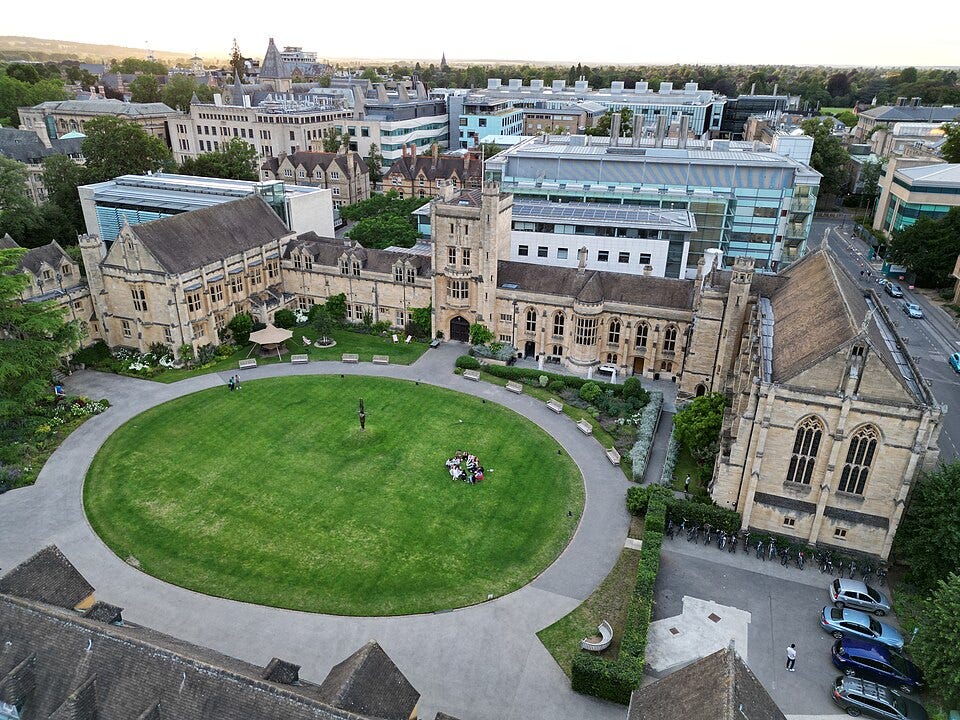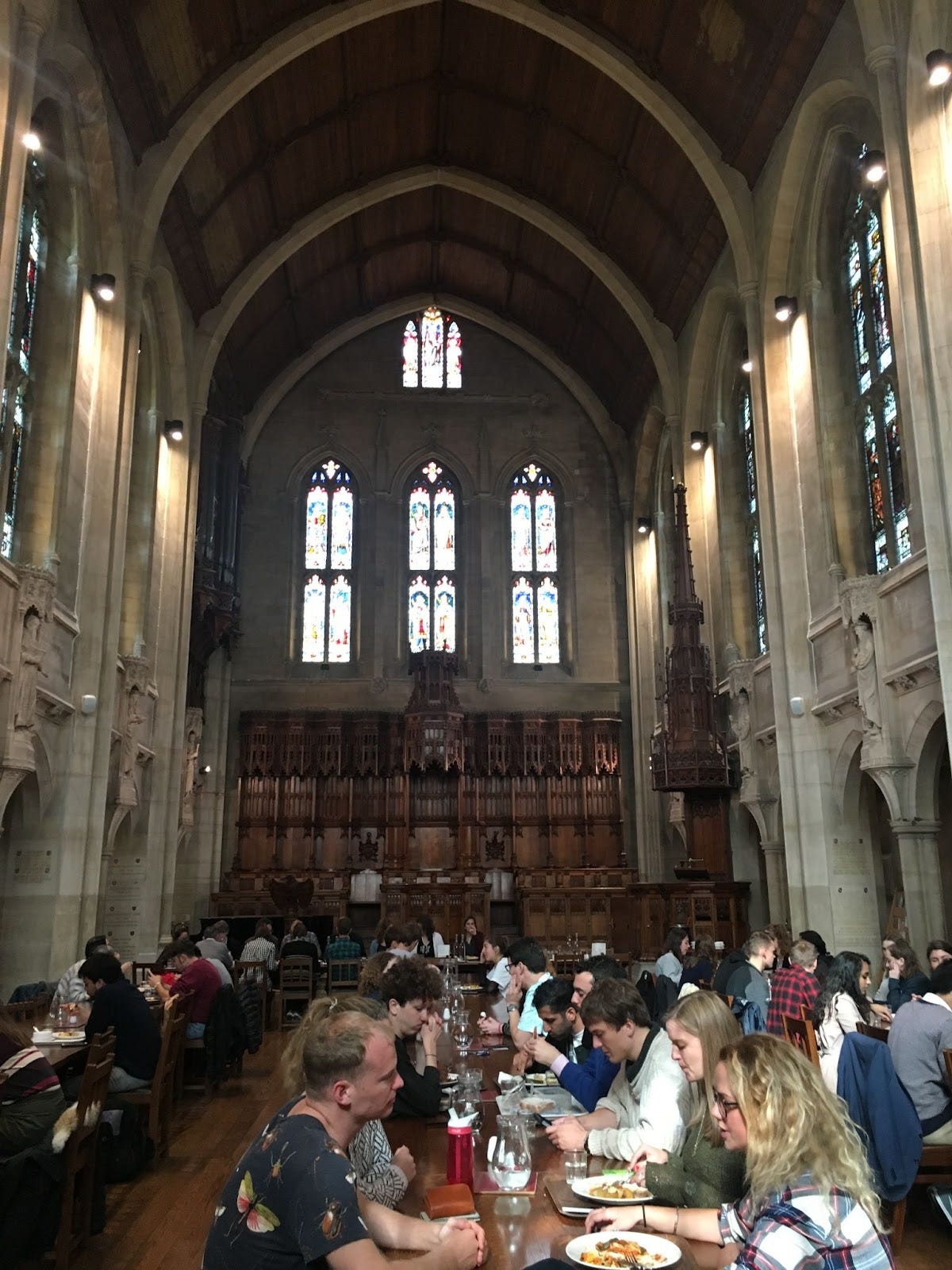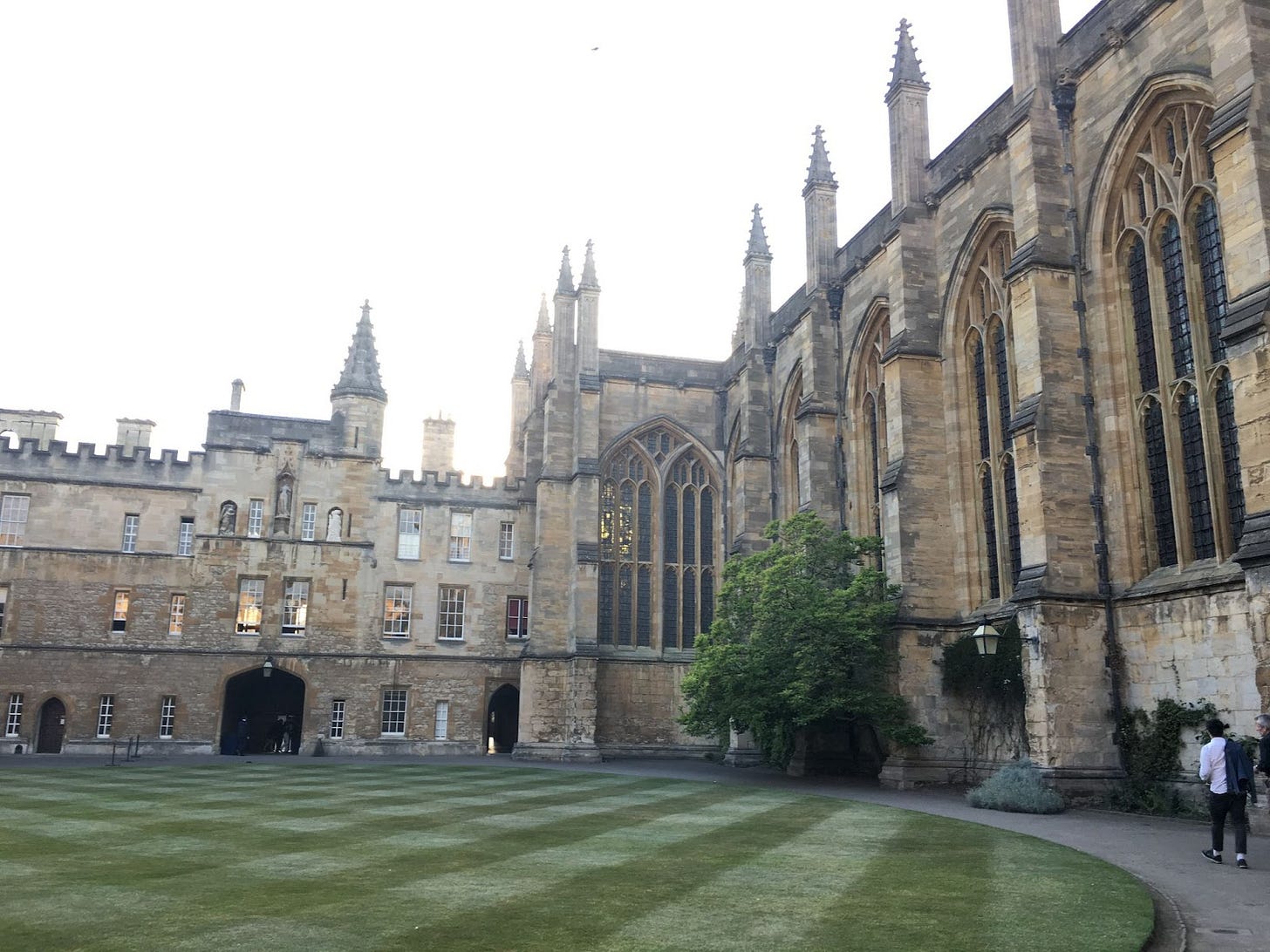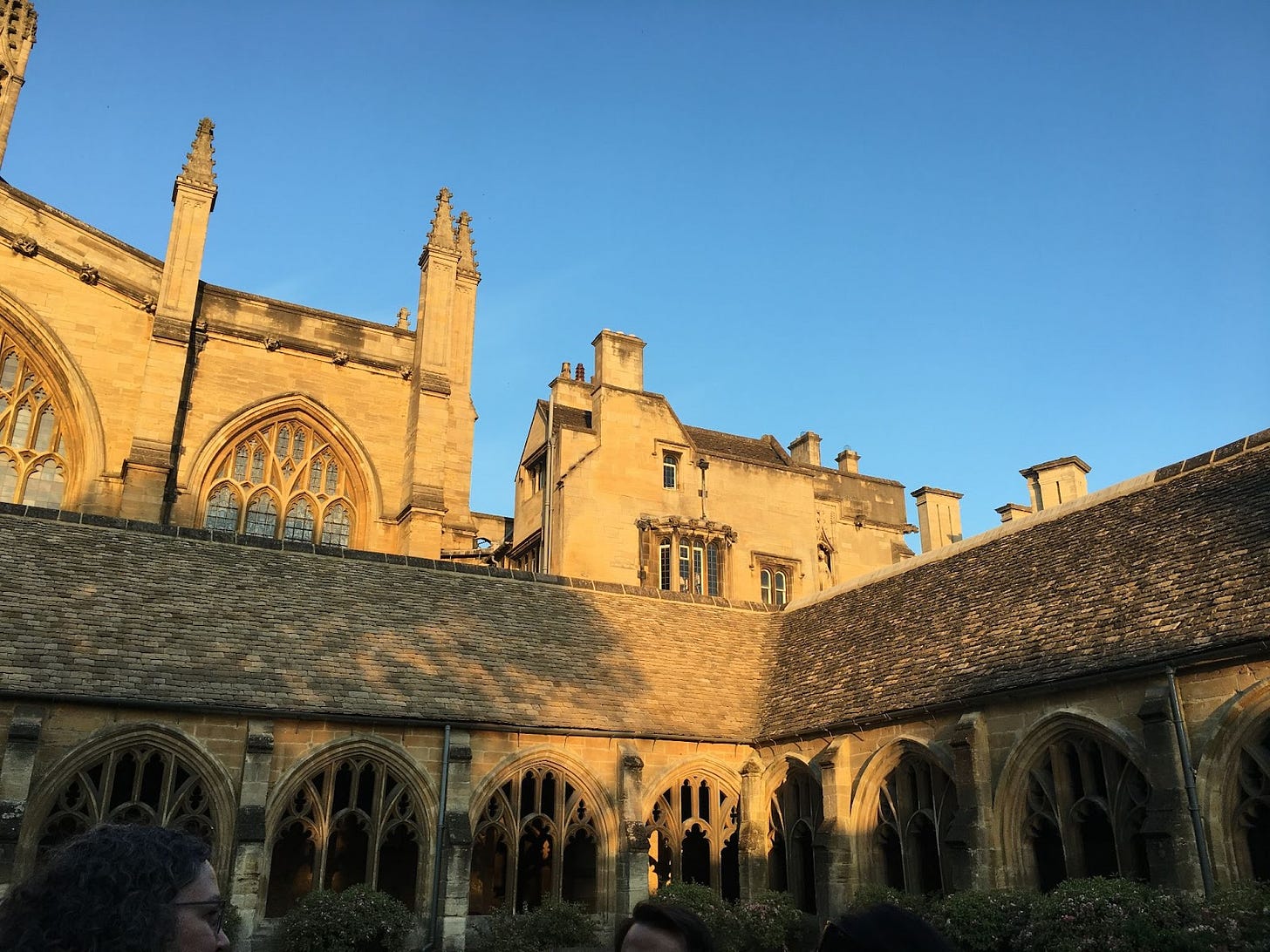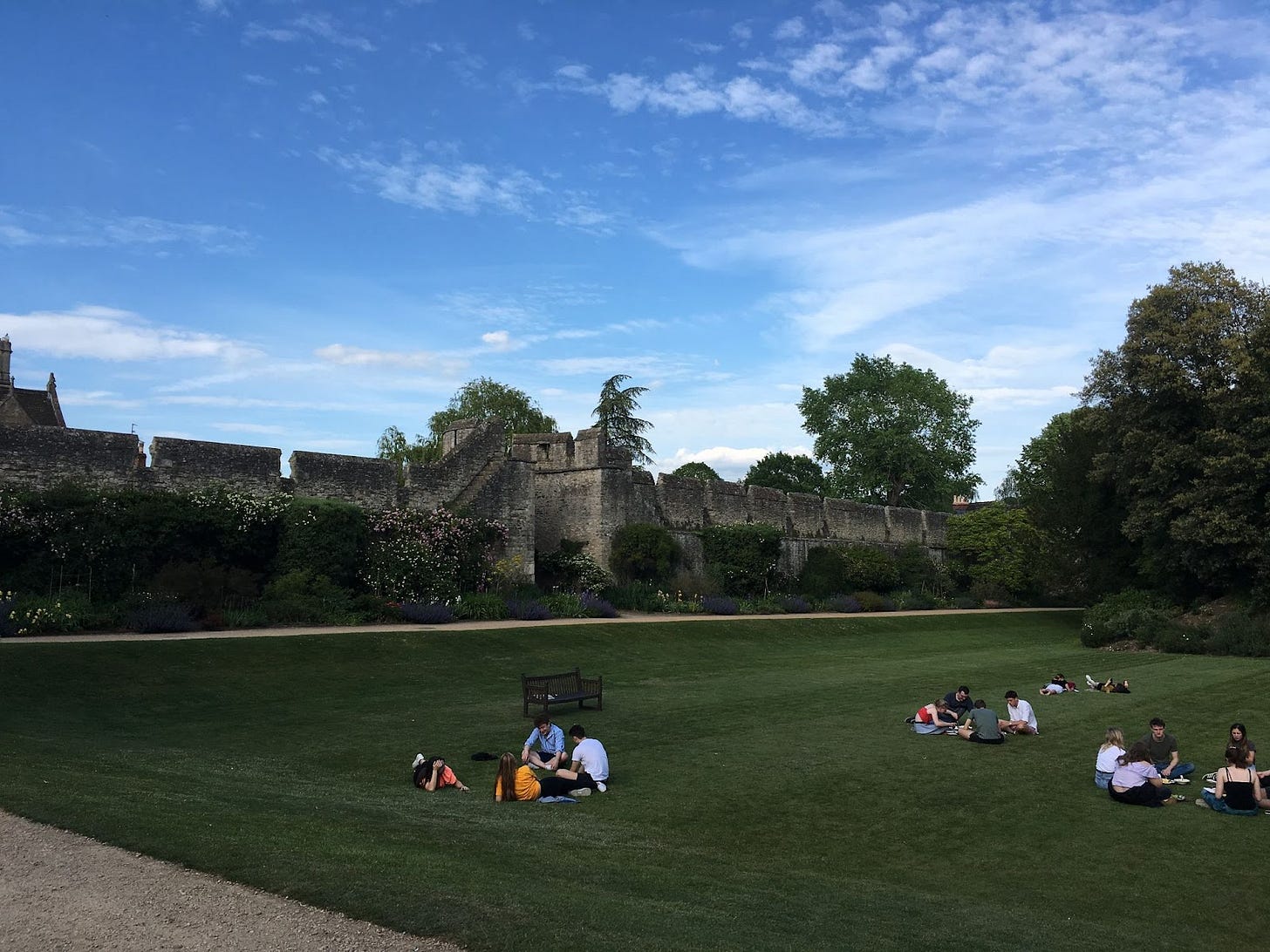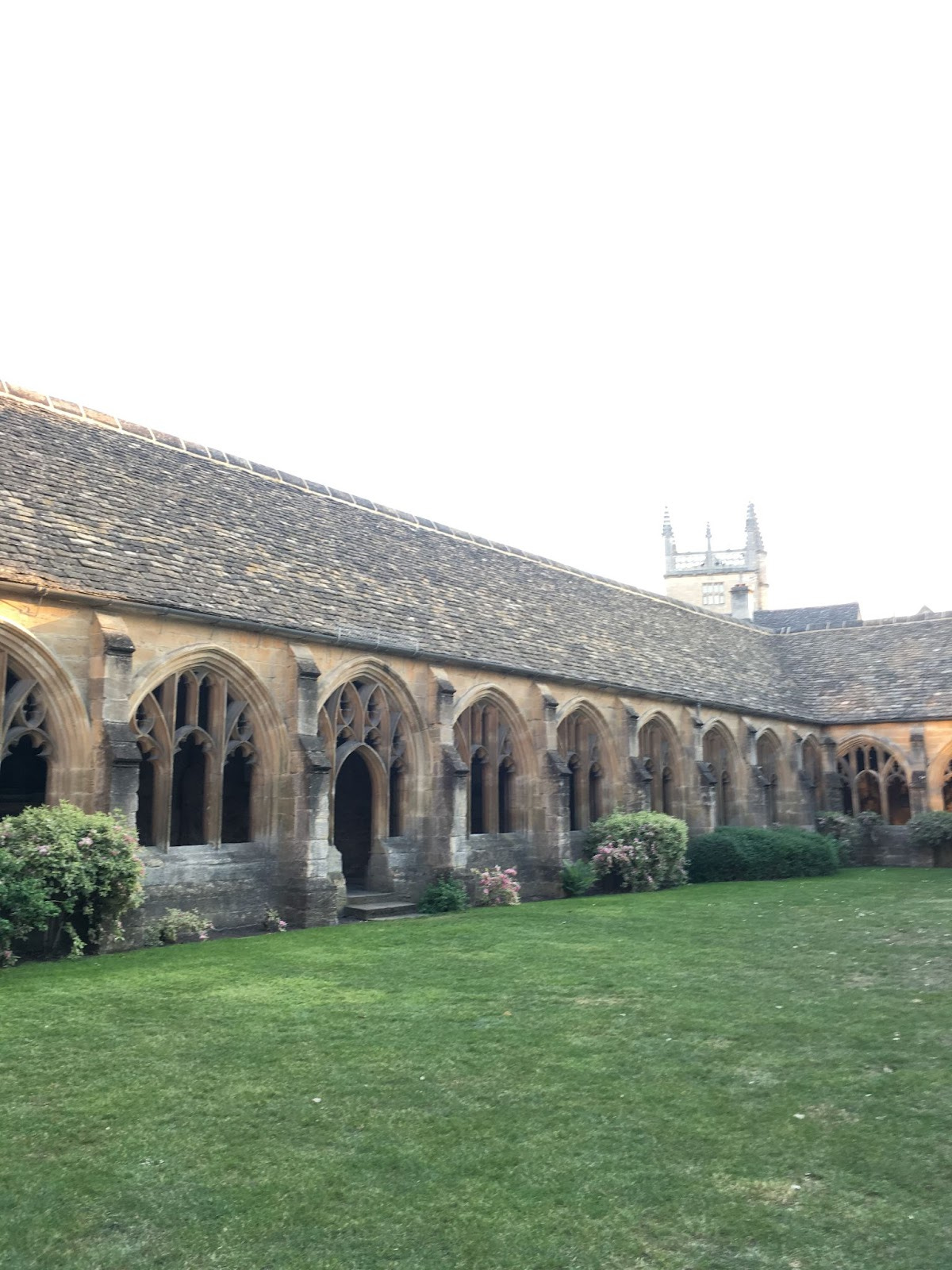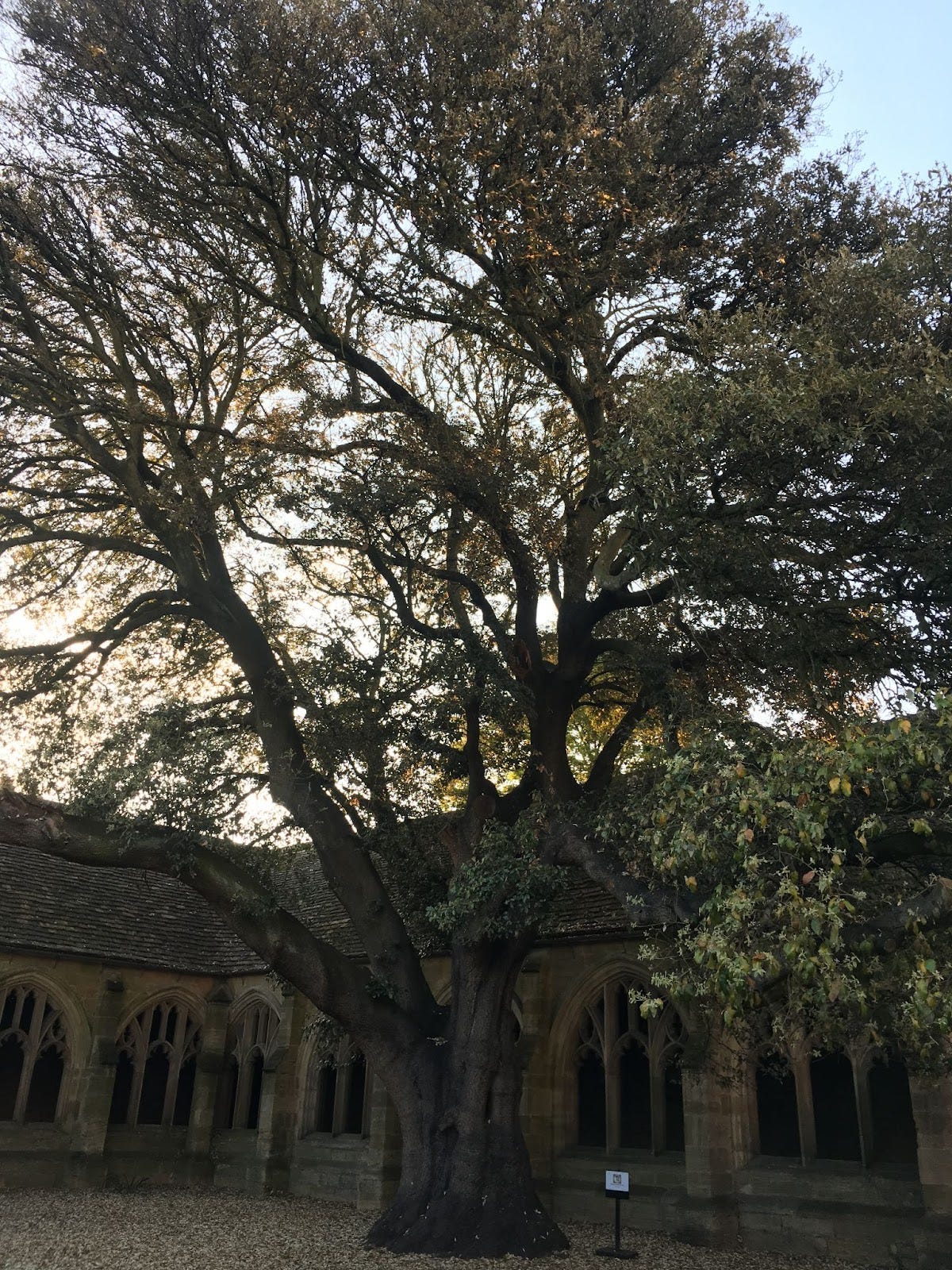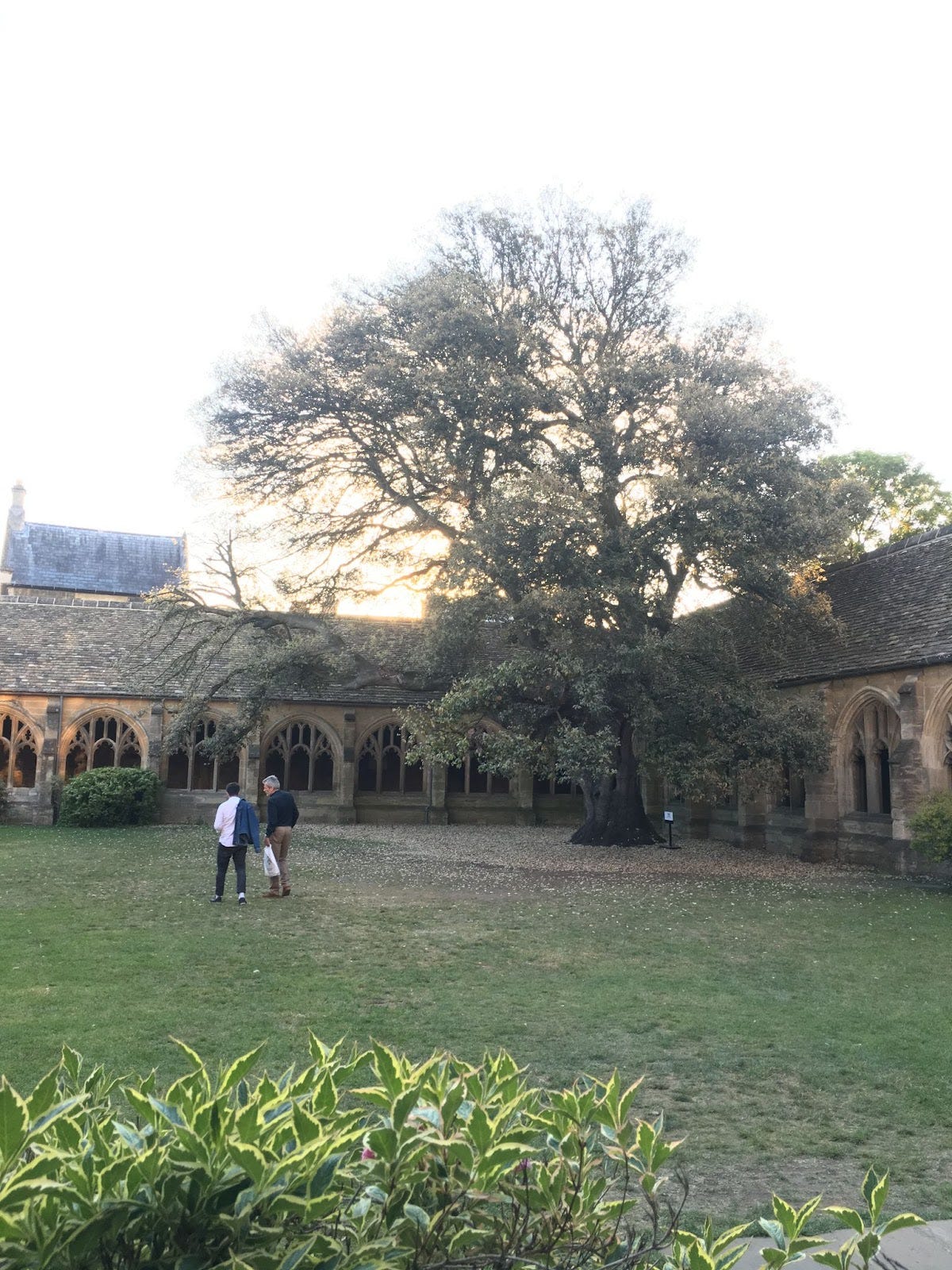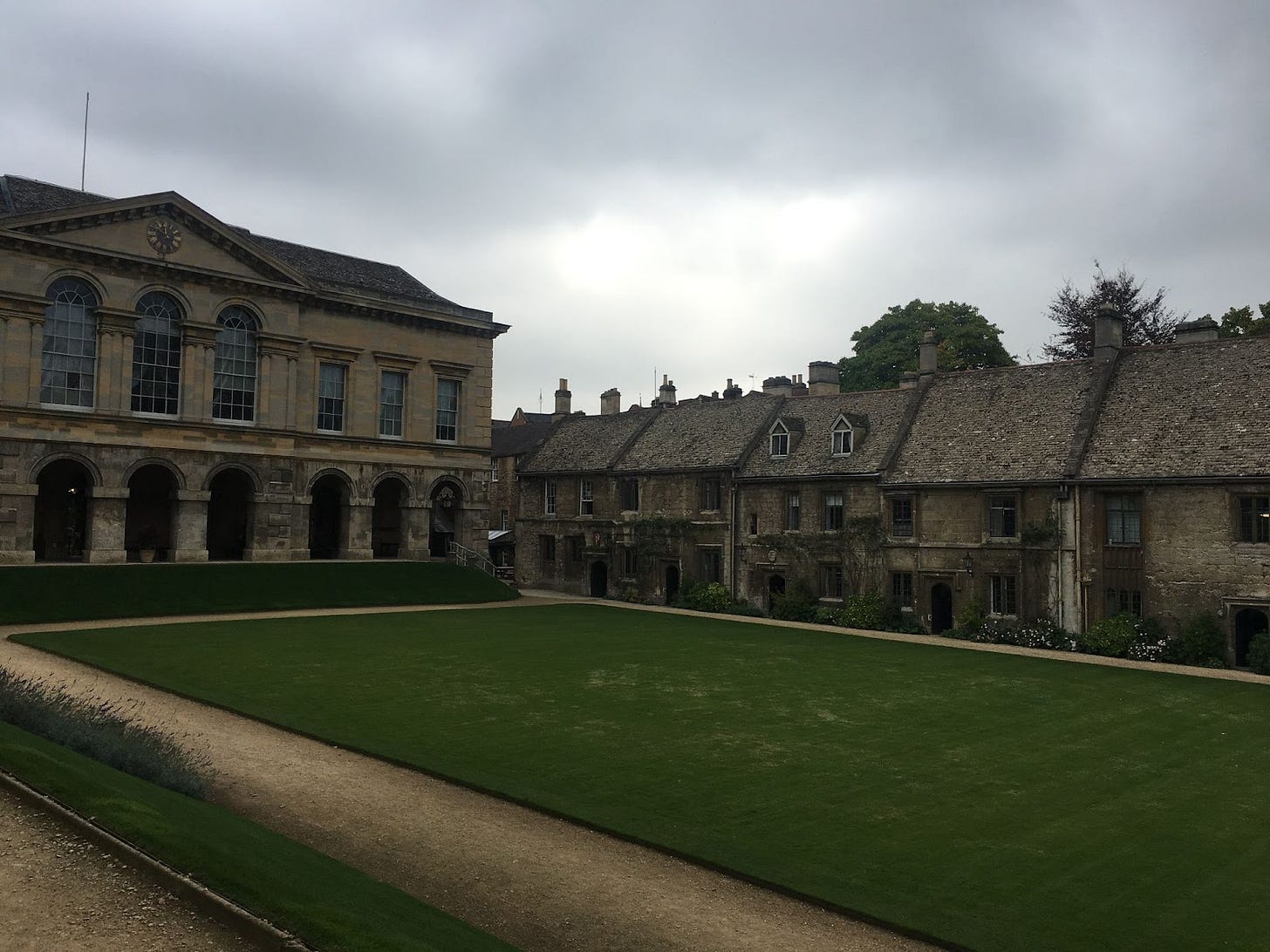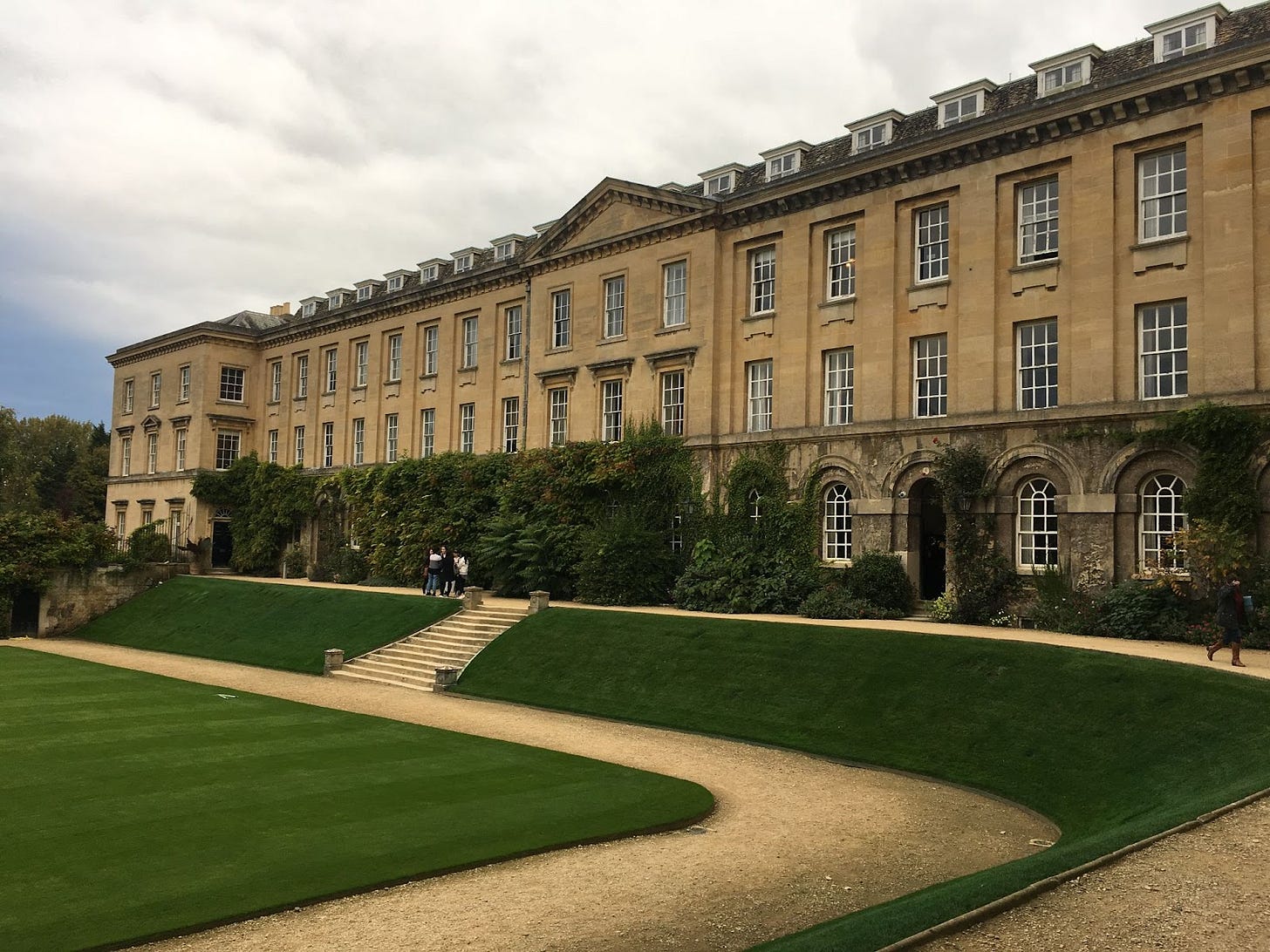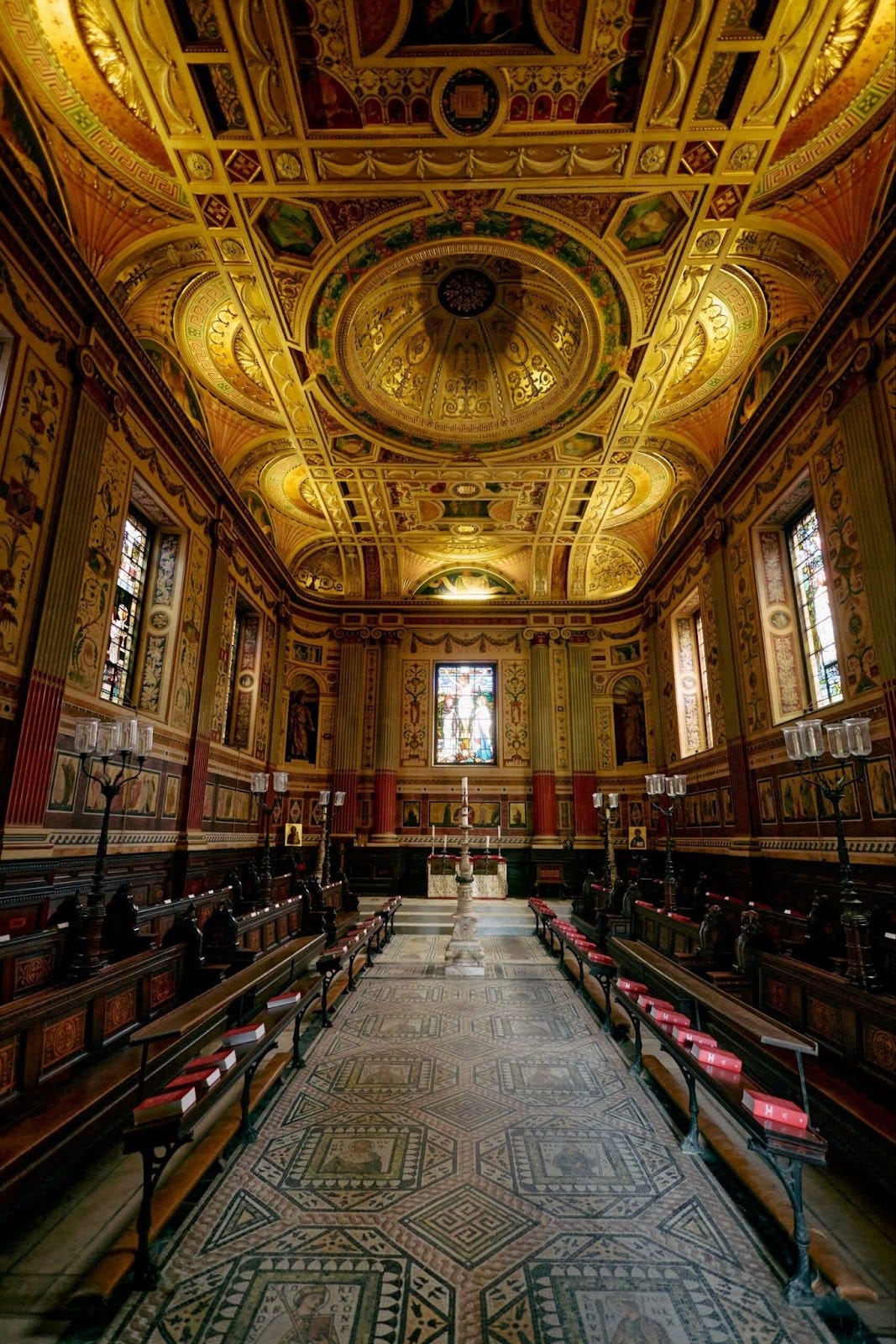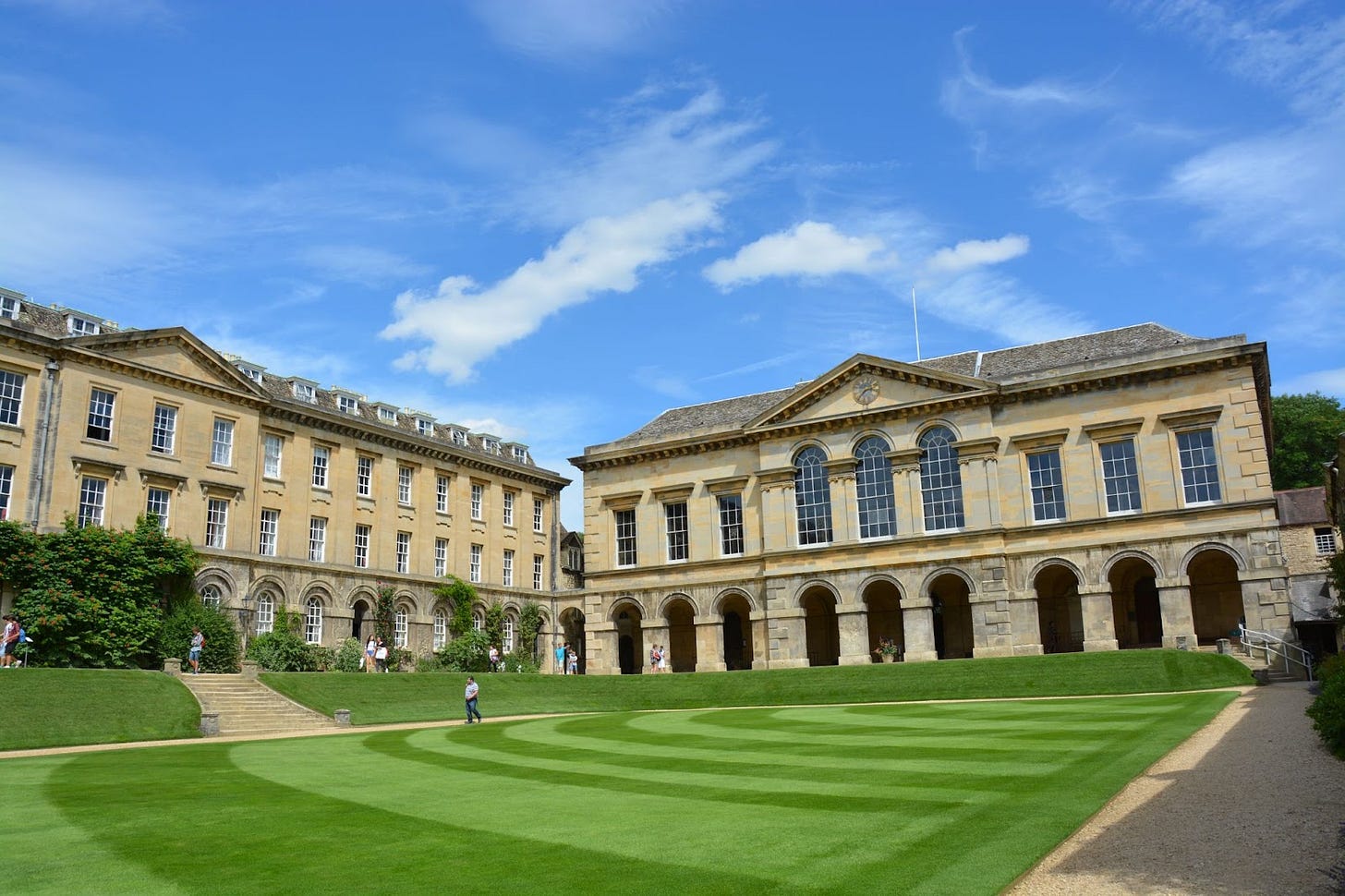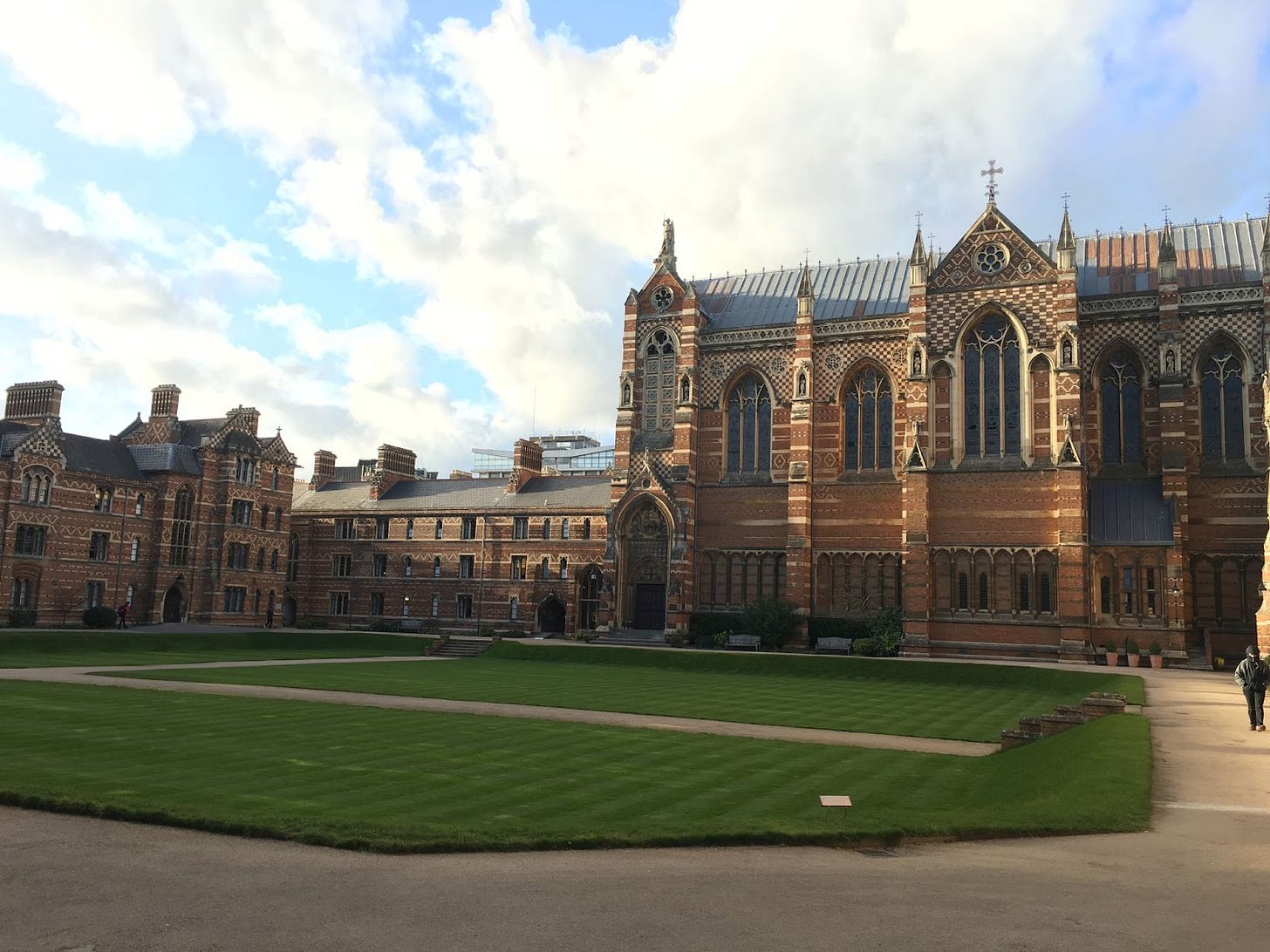Traveling Through History
Issue 42: Oxford Colleges - Mansfield, New College, Worcester and Keble.
Welcome
We continue our tour of Oxford colleges this week and go to Mansfield, New College (the 2nd oldest college at the university) Worcester College, whose main quad lawn has been called ‘Grass of the World’ and Keble College, the one who rejected the Harry Potter franchise but with Horace Rumploe as a fictional alumni!
If you’d like to follow my other Substack, you can sign up here after reading this week’s post. It’s free.
From April, this newsletter will move to the 2nd and 4th Fridays of the month, instead of weekly. Paid subscribers will be given additional bonuses that I will announce next week.
Enjoy this week's edition of Traveling Through History.
Michelle
Savvy Travel Historian
March Theme: Oxford & Cambridge Colleges - Mansfield, New College, Worcester & Keble
Mansfield College
Background
Mansfield College was originally founded in Birmingham as a ‘nonconformist’ college and moved to Oxford in 1886. It only received its royal charter as a full constituent college in 1995.
Located north of the city centre, Mansfield is in the area of Oxford surrounded by the university’s parks.
History
Mansfield began in 1838 as a nonconformist college in Birmingham called Spring Hill College. This meant that the students did not adhere fully to the practices of the church of England and Wales at that time.
The college moved to Oxford in 1886 and was renamed Mansfield after George Mansfield and his sister Elizabeth who were its patrons.
Students from any denomination could attend university in the 19thC but only those who conformed to the Church of England were able to take degrees.
In 1871 the government introduced the Universities Tests Act, which abolished the religious test for non-theological degrees at Cambridge, Durham and Oxford.
The college purchased a site from Merton College, which contained a number of Victorian buildings for their use.
While initially only men were accepted, in 1913 the first woman attended but only to undertake an external degree.
[Source]
During WWII, the college was home to forty staff members from the government who worked on British codes and cyphers. In 1955 the college received ‘private hall’ status within the university and in 1995 became a full institutional college.
In 1979 the first mixed cohort were admitted, along with a number of other university colleges at the time, who began accepting women.
Famous Alumni
Notable Alumni of Mansfield include Robert Adams the philosopher, Sir Chris Bryant MP and the Sir Philip Jones, Admiral and First Sea Lord and Head of the Royal Navy.
Honorary fellows of the college include Dame Maggie Smith and 39th President of the US, Jimmy Carter.
[Source]
Further information on Mansfield can be found here:
You can take a virtual tour of Mansfiled here
New College
Background
Founded in 1379, it is one of the oldest and earliest to admit undergraduate students and, like Christ Church, has a Harry Potter connection.
Located in the centre of Oxford, in the shadow of the Bridge of Sighs, New College is an easy walk east from the Bodleian Library quadrangle.
History
The founder of New College William Wykeham applied to King Richard II for a royal charter to establish it and once granted purchased land from Merton & Queen’s Colleges in an area known as the ‘city ditch’, which had been used to bury people during the Black Death!
In addition to the founding of the college in 1379, Wykeham established a feeder school called Winchester College and thus New College became one of the first colleges at the university to admit undergraduates.
New College was the first to be designed around a quadrangle, which would become popular for almost all colleges thereafter.
When building the college, Wykham agreed to maintain the Oxford City Wall and it is still there today. The garden border is maintained by Historic England.
During the early part of the Civil War, the royalists stored their munitions in the cloisters and bell tower.
The college coat of arms are those of William and its motto is ‘Manners Makyth Man’. Wykeham also established the college so that he could have prayers said for his soul (essentially forever).
[Source]
Students were exempt from undertaking university exams until 1864 but the college's academic reputation is solid.
King’s College Cambridge and Eton College, both established by King Henry VI, were modeled on New College and King’s is its sister college.
Like most Oxford Colleges, women were admitted in 1979, after six centuries of men only.
College Gardens
The gardens of New College are large and spectacular. The Garden Quad, provides a peaceful and tranquil area for staff & students to rest and relax in.
Harry Potter Connection
[Source]
In Harry Potter - The Goblet of fire, Malfoy and his gang are sitting in a tree as Harry walks past and (Barty Crouch Jnr as) Mad Eye Moody comes along later and turns Malfoy into a ferret.
The tree is this one in the Cloisters of New College.
Famous Alumni
Notable students of New College include a number of Archbishops of Canterbury, William Waynflete (who we talked about last week due to his foundation of Magdalen College), actor Hugh Grant, Rick Stein (celebrity chef), novelist Naomi Wolf and historian Lucy Worsley.
[Source]
Information on the college and visiting can be found here:
You can take a virtual tour here:
Worcester College
Background
The first college to put a ‘keep off the grass’ sign on their main quad lawn, Worcester College was given the title of ‘Grass of the World’, when it was voted the best out of all the Oxford & Cambridge colleges and some believe therefore, Britain and the World!
Worcester occupies the south-east section of the city, on the road just over the bridge into Oxford. The entrance is opposite the end of Beaumont St.
History
The site of Worcester College was originally established as ‘Gloucester College’ in 1283 as a house of learning for the monks from St Peter of Gloucester, a Benedictine Abbey. Over time, fifteen other monasteries would send their monks to be educated there.
The medieval cottages in this image, date back to this time and the shields above the doorways depict those abbeys who were associated with the college.
The Dissolution of the Monasteries in 1539 saw the college close and the Bishop of Oxford purchased it and used the grounds and buildings as his palace.
In 1560 the founder of St John’s College (which was nearby and very wealthy), purchased the site as an annexe and it was named Gloucester Hall.
The next 150 years the college went through periods of prosperity and decline. One notable Alumni during this time was Robert Catesby, who was the leader behind the Gunpowder Plot of 1605, with Guy Fawkes.
The last part of the 16thC saw the college try to establish a ‘Greek college’, to educate Greek Orthodox students, but declining numbers saw it dissolved once again in 1705.
In 1714 the college was founded as “Worcester College, after a benefaction from Sir Thomas Cooke’s will, so further building works began on the hall, the chapel and the library. The medieval cottages were almost demolished but running out of money saved them!
The gardens seen in the college today were created in the first few decades of the 19thC and the chapel refurbished in 1864.
[Source]
In the first term (Michaelmas) of 1979, 41 women started at Worcester but it would take until 2011 before the male/female ratio was equal.
In 2023, the college received its largest financial gift of £30m from Sir Lindsay Owen-Jones KBE, which will enable a number of new building programs to start.
[Source]
It is said that in 1785, Worcester was the first college to put up ‘keep off the grass signs’ and its grass truly is spectacular and well cared for.
I went to Worcester for weekly lectures during one of my terms at Oxford and one morning the gardeners were out mowing the lawns.
Famous Alumni
Notable Alumni include actress Emma Watson, Lindsey Owen-Jones, Chairman of L'oreal cosmetics, Rupert Murdoch, and historian Anthony Seldon.
Professor Peter Frankopan, author of ‘The Silk Roads’, is a Senior Research Fellow.
[Source]
Information on the college and visiting can be found here:
Worcester College Website
Take a virtual tor of Worcester here:
Keble College
Background
Originally set up to offer an ‘affordable’ education in honour of Sir John Keble (after whom it is named), Keble College dates back to 1879 and is known in Oxford circles as the college that rejected Harry Potter.

